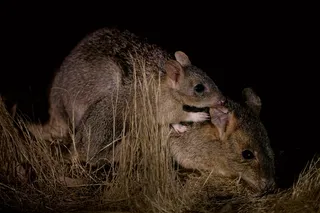Sexual harassment and female gregariousness in the South American sea lion, Otaria flavescens. "Most colonial pinnipeds [fin-footed animals] form extreme clusters of breeding females that cannot be entirely explained by the distribution of sites for reproduction. Avoidance of male harassment has been postulated as an important determinant of reproductive aggregation in this group of mammals. Female gregariousness can reduce harassment by resident males by two mechanisms; directly by the 'dilution effect' or indirectly because resident males that defend large female groups are less harassing. In order to investigate the relationship between male harassment and female gregariousness in relation to the size of breeding groups, we analysed the behaviour of dominant males and their females in a breeding colony of Otaria flavescens. Females in large breeding groups received less harassment by resident males due to dilution effects and because males that defended a large group interacted less frequently with females than ...
NCBI ROFL: The sea lion solution to sexual harrassment: keep fewer males around.
Discover how sexual harassment in sea lions influences female gregariousness and breeding group dynamics in Otaria flavescens.
More on Discover
Stay Curious
SubscribeTo The Magazine
Save up to 40% off the cover price when you subscribe to Discover magazine.
Subscribe












